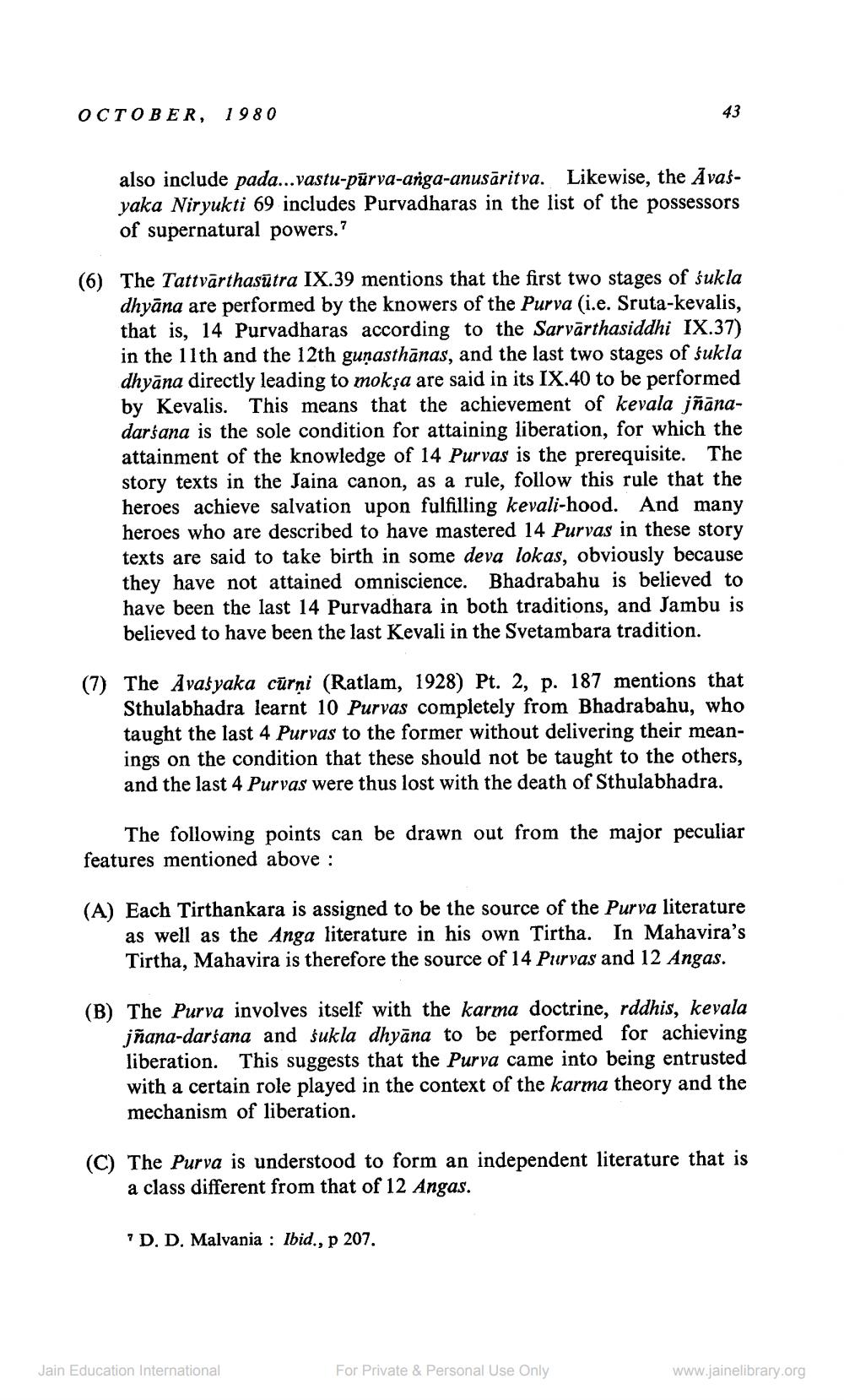Book Title: Jain Journal 1980 10 Author(s): Jain Bhawan Publication Publisher: Jain Bhawan Publication View full book textPage 5
________________ OCTOBER, 1980 also include pada...vastu-purva-anga-anusaritva. Likewise, the Avasyaka Niryukti 69 includes Purvadharas in the list of the possessors of supernatural powers." (6) The Tattvärthasutra IX.39 mentions that the first two stages of sukla dhyāna are performed by the knowers of the Purva (i.e. Sruta-kevalis, that is, 14 Purvadharas according to the Sarvarthasiddhi IX.37) in the 11th and the 12th gunasthānas, and the last two stages of sukla dhyāna directly leading to moksa are said in its IX.40 to be performed by Kevalis. This means that the achievement of kevala jñānadarsana is the sole condition for attaining liberation, for which the attainment of the knowledge of 14 Purvas is the prerequisite. The story texts in the Jaina canon, as a rule, follow this rule that the heroes achieve salvation upon fulfilling kevali-hood. And many heroes who are described to have mastered 14 Purvas in these story texts are said to take birth in some deva lokas, obviously because they have not attained omniscience. Bhadrabahu is believed to have been the last 14 Purvadhara in both traditions, and Jambu is believed to have been the last Kevali in the Svetambara tradition. 43 (7) The Avasyaka curni (Ratlam, 1928) Pt. 2, p. 187 mentions that Sthulabhadra learnt 10 Purvas completely from Bhadrabahu, who taught the last 4 Purvas to the former without delivering their meanings on the condition that these should not be taught to the others, and the last 4 Purvas were thus lost with the death of Sthulabhadra. The following points can be drawn out from the major peculiar features mentioned above: (A) Each Tirthankara is assigned to be the source of the Purva literature as well as the Anga literature in his own Tirtha. In Mahavira's Tirtha, Mahavira is therefore the source of 14 Purvas and 12 Angas. (B) The Purva involves itself with the karma doctrine, rddhis, kevala jñana-darśana and sukla dhyana to be performed for achieving liberation. This suggests that the Purva came into being entrusted with a certain role played in the context of the karma theory and the mechanism of liberation. (C) The Purva is understood to form an independent literature that is a class different from that of 12 Angas. 'D. D. Malvania: Ibid., p 207. Jain Education International For Private & Personal Use Only www.jainelibrary.orgPage Navigation
1 ... 3 4 5 6 7 8 9 10 11 12 13 14 15 16 17 18 19 20 21 22 23 24 25 26 27 28 29 30 31 32 33 34 35 36 37 38 39 40 41 42
